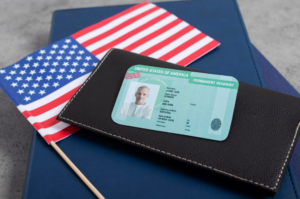How to Apply for TPS in the U.S. Step by Step

How to Apply for TPS in the U.S. Step by Step
Let me say this right from the heart: if you’re in the U.S. right now and your home country is going through something terrible—whether it’s war, political chaos, or disaster—you’re not alone. There’s a way for you to stay here legally and safely, and it’s called Temporary Protected Status, or TPS.
I know just thinking about immigration paperwork can make you freeze. The forms, the rules, the fees—it’s a lot. But here’s the good news: you can do this. Being a lawyer isn’t required. Perfect English isn’t necessary. What you need is a clear guide and someone to walk you through it.
That’s what this is. I’m going to break it all down so you feel more confident about applying for TPS. Let’s take it one step at a time.
What is TPS?

TPS stands for Temporary Protected Status, and it’s exactly what it sounds like. If your country isn’t safe to go back to—due to conflict, natural disaster, or something serious—the U.S. government might put your country on a list that allows its citizens to apply for temporary protection here.
If your country is on that TPS country list and you were already in the U.S. on a certain date, you can apply for TPS. It doesn’t give you a green card or make you a citizen, but it does give you something so important: a legal way to stay here, get a work permit, and just… breathe. Safely.
Who Can Apply?
Here’s how you know if you’re likely eligible:
- Your country is currently listed for TPS
- You were physically in the U.S. on the required date
- You’ve been living here since that date
- You don’t have serious crimes or immigration violations on your record
If you meet those, you can move forward. Check the most up-to-date TPS country list on the USCIS website.
What You’ll Need First
Before filling out anything, you’ll want to gather some documents. These are things that show you are who you say you are, and that you’ve been living here. You’ll need:
- Proof of who you are – a passport, ID card, birth certificate
- Proof of where you’re from – same as above, really
- Proof you entered the U.S. before the TPS date – like a visa stamp, plane ticket, or I-94
- Proof you’ve stayed here – rent receipts, bills, school letters, work pay stubs
And please: make copies, not originals. If your documents are in another language, get them translated by someone official.
If you had TPS before and you’re reapplying, keep your old TPS approval letter or previous TPS document nearby.
Step-by-Step: How to Apply
Let’s break it down real simple.
Step 1: Fill Out the Main Form – Form I-821

This is your application form. It’s called “Form I-821,” and it’s how you ask the U.S. government for TPS. You can fill it out online through the USCIS site (yes, there’s a TPS online application option) or print it and do it by hand.
This part is important: don’t rush. The instructions (called the “Form I-821 instructions”) might seem overwhelming, but take them line by line. It’s better to go slow and get it right than to rush and get delayed or denied.
Also, if you want to be able to work legally while you’re in the U.S. (and most people do), you should fill out Form I-765. That’s the one for a work permit.
Step 2: Pay the Fees (Or Ask for a Waiver If You Can’t)
TPS comes with a cost, and I get it—money’s tight for a lot of people right now. Here’s the typical breakdown:
- I-821 filing fee: about $50
- Biometrics fee: $30
- Work permit (I-765): Paper Filing Fee($520) , Online Filing Fee($470)
So in total, you’re looking at around $550-$600. That’s the usual “TPS application fee”, but it depends on your age and work permit request.
If you can’t afford that? You can apply for a fee waiver. That means you fill out a different form (I-912), explain your financial situation, and submit proof (like pay stubs or bills). Many people do this and get approved.
Always double-check the current TPS filing fee before you send anything.
Step 3: Submit Your Application
Once the forms are filled out and your documents are ready, you’ll either:
- Submit it online through the USCIS portal
- Or send your packet by mail
If you mail it, include:
- Completed “Form I-821.”
- Form I-765 (if applying for a work permit)
- All your supporting evidence
- Proof of payment or request for waiver
Important: USCIS has different mailing addresses for different states. Look up where to send the TPS application based on where you live.
If you’re applying for a TPS renewal application, the same rules apply. Just be sure you meet the TPS renewal requirements.
Use a service with tracking so you know your application gets delivered.
Step 4: Biometrics Appointment

After you apply, USCIS will send you a letter with a date for your biometrics appointment. That’s just where they take your photo, fingerprints, and signature.
It’s not a big deal—just show up on time with ID and the appointment letter. It usually takes about 15–20 minutes.
Step 5: Wait for the Decision
Once you’ve done all of the above, it’s time to wait. Most people hear back within 3–5 months, but it depends on where you’re applying and what USCIS’s current load is.
You can check your I-821 processing time online using the case number on your receipt notice.
If approved, you’ll get:
- A TPS approval notice
- Your work permit (if you requested it)
If denied, don’t panic. They’ll explain why. And in many cases, you can fix the issue or reapply.
Can You Travel on TPS?
Not unless you ask first. You’ll need a travel authorization document, sometimes called advance parole. To request that, you fill out Form I-131 and wait for approval before leaving.
If you travel without it, there’s a real risk of being denied entry with advance parole. So please—don’t skip this step if you need to leave the U.S.
How to Renew TPS
TPS is temporary, so you’ll have to renew it from time to time—usually every 18 months. USCIS will post a re-registration window, and you’ll have to file during that period.
To renew:
- Submit a new “Form I-821”
- Add Form I-765 if you want to keep working
- Pay any fees associated with TPS renewal, or ask for a waiver again
Don’t wait until the last minute. And always check the How to renew TPS page for your country, because every country has slightly different instructions.
Can TPS Lead to a Green Card?

This is one of the most common questions people ask:
“Can I apply for a green card with TPS?”
Here’s the honest answer: maybe.
TPS by itself doesn’t give you a green card. But if you qualify another way—maybe through a family petition, a spouse who’s a U.S. citizen, or a job—you might be able to apply while holding TPS.
Every case is different, and it depends on how you entered the U.S. and what your options are. Talk to an immigration attorney before filing anything new.
Ready to Apply for TPS? Let’s Get It Done—The Right Way
Not sure how to fill out your Form I-821? Confused about the TPS filing fees or the work permit process? Visit Passage Law here. We’ve helped hundreds of people through it, and we can help you too.
Consult us now and take the first step toward safety and peace of mind.
Disclaimer: This article offers general legal information, not legal advice. Do not rely upon this information without seeking legal counsel. If you need legal advice, you may contact us directly to speak with an attorney. We disclaim all liability with respect to actions taken based on any information presented. Every case is different, and outcomes will vary depending on the unique facts and legal issues of your case.
